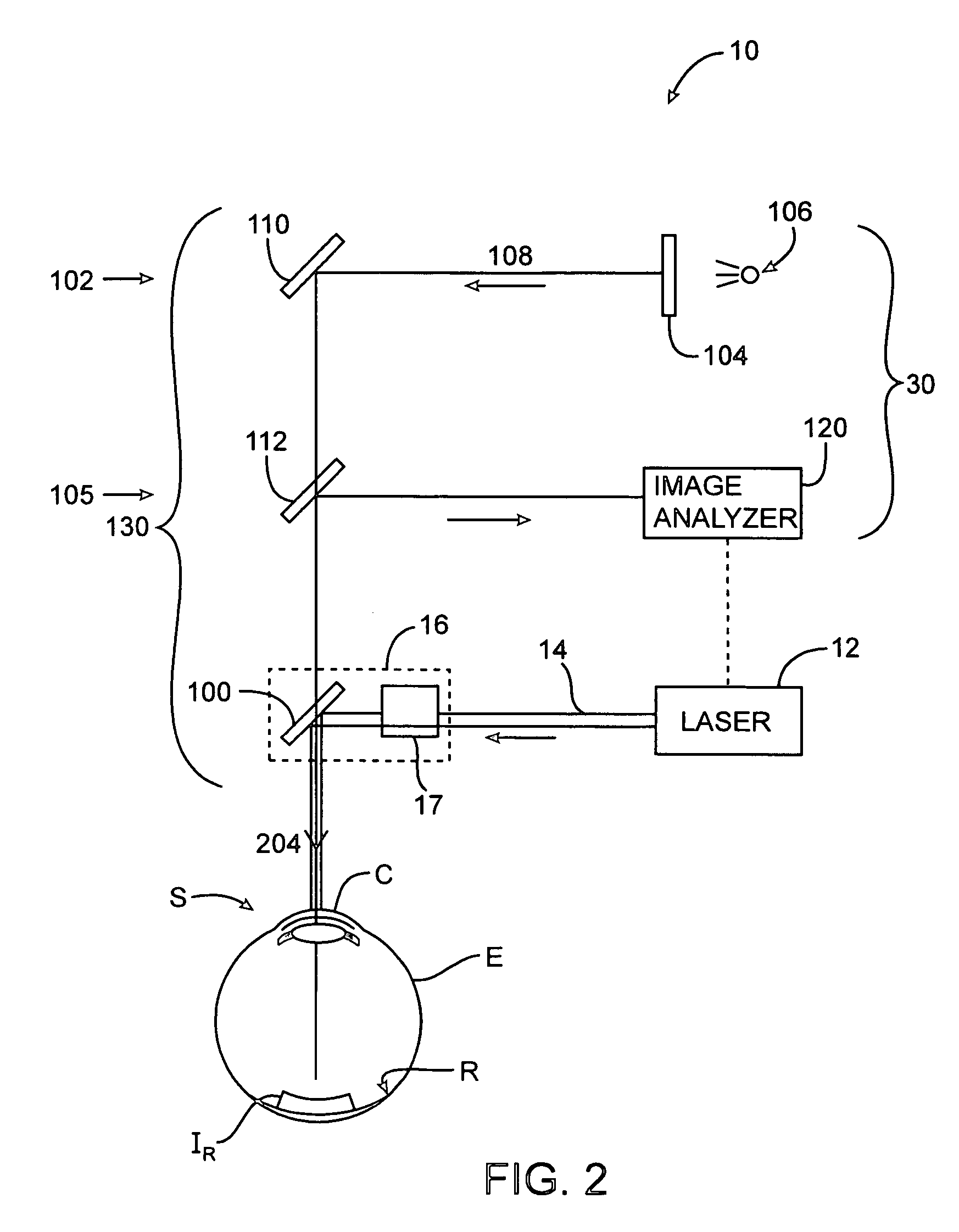Methods for determining refractive corrections from wavefront measurements
a wavefront measurement and refractive correction technology, applied in the field of vision correction systems, can solve the problems of not necessarily leading to the best image quality, difficult use of wavefront measurements for refractive correction, and inability to accurately determine the strehl ratio, etc., to achieve the effect of enhancing the accuracy and efficacy of laser eye surgery procedures and being easily adapted for us
- Summary
- Abstract
- Description
- Claims
- Application Information
AI Technical Summary
Benefits of technology
Problems solved by technology
Method used
Image
Examples
Embodiment Construction
[0029]The present invention generally provides improved methods and devices for determining refractive corrections from measurements of optical error, such as wavefront measurements. The invention is particularly useful for enhancing the accuracy and efficacy of laser eye surgical procedures such as photorefractive keratectomy (PRK), phototherapeutic keratectomy (PTK), laser in situ keratomileusis (LASIK), and the like, and can be easily adapted for use with existing laser systems. Although methods and systems of the invention are described in the context of laser eye surgery, however, it should be understood the methods and systems may be adapted for use in alternative eye treatment procedures and systems such as for use in radial keratotomy, intraocular lenses, corneal ring implants, and the like. All references referred to in this application are hereby incorporated herein by reference.
[0030]Referring now to FIG. 1, a laser eye surgery system 10 which may make use of methods and / ...
PUM
 Login to View More
Login to View More Abstract
Description
Claims
Application Information
 Login to View More
Login to View More - R&D
- Intellectual Property
- Life Sciences
- Materials
- Tech Scout
- Unparalleled Data Quality
- Higher Quality Content
- 60% Fewer Hallucinations
Browse by: Latest US Patents, China's latest patents, Technical Efficacy Thesaurus, Application Domain, Technology Topic, Popular Technical Reports.
© 2025 PatSnap. All rights reserved.Legal|Privacy policy|Modern Slavery Act Transparency Statement|Sitemap|About US| Contact US: help@patsnap.com



